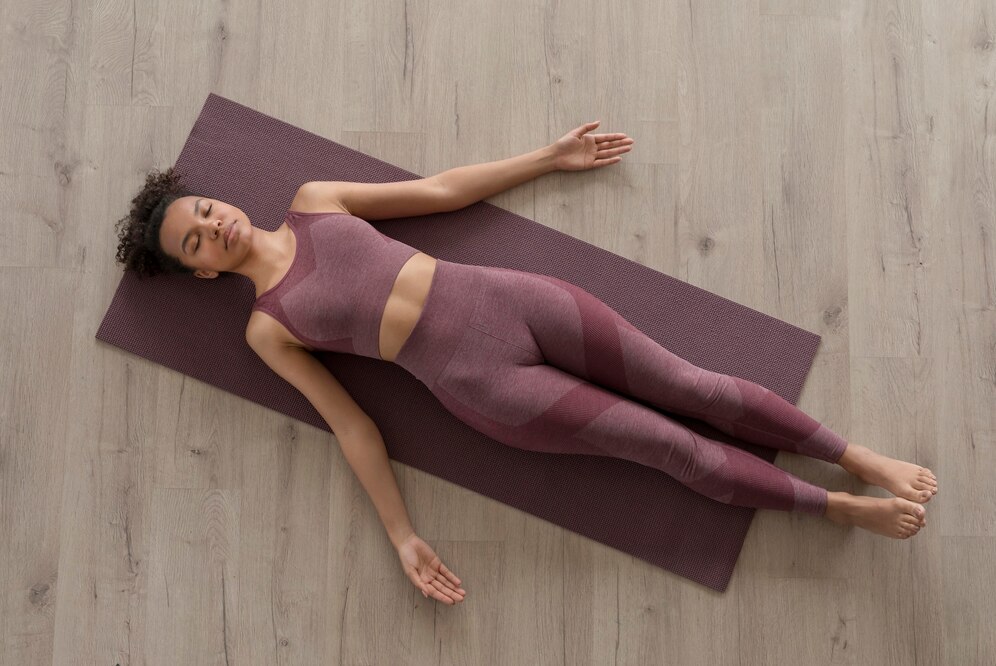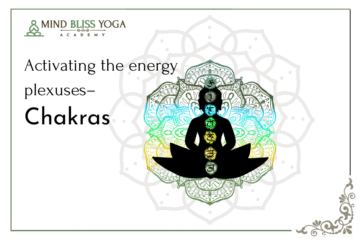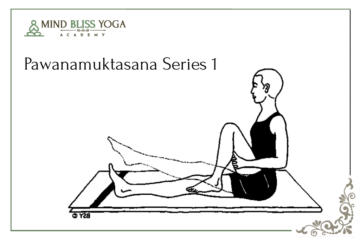Yoga is not just a practice; indeed, it is a way of life that was adopted years ago. Asanas, or poses, in yoga help in many ways; it is a complete wellness practice for your body, mind, and emotions. One such asana is Shavasana (also known as corpse pose).
There are many benefits of corpse pose for body and mind; still, many practitioners view it as the final resting pose after doing a session of yoga. But if we look closely, this pose is much more than just being a final resting pose—it holds a crucial purpose in your practice and daily life. As the final pose of a yoga session, shavasana allows your body to integrate the active physical session you just completed. And as an individual pose, it allows your body and mind to relax and act as a meditative pose.
Meaning of Shavasana
Pronunciation: sha-vah-sa-na
The Sanskrit word “Shava” means corpse, and “Asana” means pose, and hence the literal meaning of Shavasana is corpse pose. This is called so as the posture resonated from the recumbent posture of a dead body. In yoga, it is the posture of rest and relaxation, not only physically but mentally too. Shavasana is usually practiced at the end of a yoga session. It can also be called the last pose or rest pose of yoga asana.
If you are a complete beginner practicing yoga, then you should do this pose after every yoga asana, as it will give you time and rest to get ready for the next pose.
Step-by-Step Guide—Shavasana
- Sit on your feet on the floor, bending your knees.
- Lean back gently onto your forearms.
- As you breathe in, gradually extend your legs while keeping your feet turned out to the sides.
- Soften the front of your pelvis while narrowing it.
- Lift your pelvis off the floor while slightly tucking your tailbone and your lower back.
- Sweep your buttocks away from your lower back with your hands. Then bring your pelvis down.
- Use your hands to lift the base of your skull away from the back of your neck. Support the neck with a folded blanket if needed. Relax the shoulders away from the ears.
- Lift your arms evenly to the sides of your body and perpendicular to the floor. Rock slightly from side to side, broadening the back ribs and shoulder blades away from the spine. Then release your arms to the floor at your sides.
- Turn your arms outward and let the backs of your hands rest down. Make sure your shoulder blades rest evenly on the floor.
- Relax your mouth, tongue, and the skin around your nose, ears, and forehead. Let your eyes rest deep within your skull, gazing inward toward your heart.
- Maintain this position for a minimum of 5 minutes.
- To come out: exhale gently, roll to one side, pause, then use your hands to press up slowly while lifting your head last.
Tips for Performing an Effective Shavasana
- Practice in a silent and dark environment, free of distractions.
- Use props like a blanket or bolster for additional support.
- Focus on your breath and bodily sensations.
- Wear comfortable clothing to avoid restriction.
Common Mistakes to Avoid
- Stay conscious and aware to avoid falling asleep.
- Do not hold unnecessary tension in any part of the body.
- Avoid rushing—allow your body time to fully relax and absorb the practice.
Health Benefits of Shavasana
- Deep Relaxation: Helps release muscular tension and calms the nervous system.
- Enhances Sleep: Reduces cortisol, improves sleep patterns, and helps with insomnia.
- Improves Focus: Boosts concentration and mental clarity through meditative stillness.
- Controls Blood Pressure: Regulates blood pressure and improves heart function.
- Boosts Energy: Recharges your system and combats fatigue.
- Muscle Recovery: Aids in healing and reduces soreness post-practice.
Contraindications
There are no known contraindications unless advised by a doctor not to lie on your back for medical reasons.




